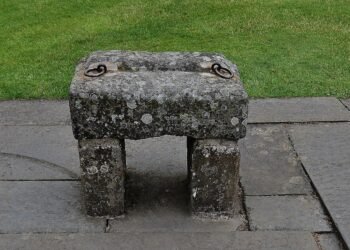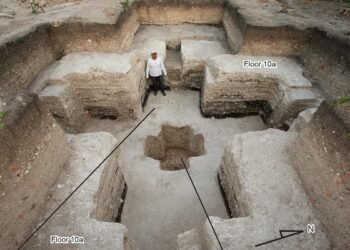A recent study has identified a mass grave in China as the site of the largest known headhunting massacre in Neolithic Asia, dating back approximately 4,100 years.

The Honghe site, located in Northeast China’s Heilongjiang province, has been the subject of six excavations since the 1990s, with the latest revealing a gruesome scene of 41 headless skeletons, making it a historic and unprecedented discovery.
Remarkably, all the victims, identified as women and children, displayed consistent cut marks across their neck vertebrae, indicating a systematic approach to decapitation. The assailants utilized bone-handled knives with stone blades, suggesting a uniformity in technique and weaponry.
The findings, published in the Archaeological and Anthropological Sciences journal, reveal that 32 of the 41 beheadings occurred in a single horrifying event, pointing to a coordinated and large-scale act of violence. The nature of the cuts and the consistency in the weapons used led researchers to conclude the presence of a conscious and deliberate head-hunting behavior.
Headhunting, a common practice in various Asian countries driven by ritualistic, social, and territorial motives, was used by tribes to gain spiritual power, assert dominance over rival communities, and appease ancestral spirits. The study proposes two theories for the Neolithic headhunting massacre at the Honghe site.
The first theory suggests an interpersonal conflict with a high level of cruelty, where rival groups specifically targeted women and children during an attack on the settlement. The researchers propose the existence of a ritualistic aspect, positing that heads of enemy tribes were sought after for a specific ritual meaning, potentially to conquer or possess the soul and energy of the enemies.
The second theory centers around settlement rivalry, supported by defensive trenches surrounding the site. Choosing women and children as victims may have been a strategic move to cause maximum outrage and cruelty, aiming to destabilize the Honghe community. The researchers speculate that the male members of the settlement may have been away during the attack and returned to find their loved ones massacred, leading to the decision to bury them in the houses before abandoning the settlement.
The study’s senior author, Qian Wang, a professor of biomedical sciences at Texas A&M University School of Dentistry, emphasized the ritualistic aspect of headhunting. “Heads of enemy tribes were sought after for a specific ritual meaning, to conquer and/or possess the soul and energy of the enemies,” he told Live Science. This specific ritual may have required the heads of women and children, raising questions about the cultural and spiritual significance of the gruesome practice.
Meanwhile, the four bodiless skulls may have been trophies brought by the Honghe tribe from another tribe. It’s crucial to highlight that the remaining individuals in the mass graves showed no signs of cut marks, suggesting the possibility of a distinct method of decapitation.
The scientists wrote: “The study of headhunting culture would help not only reconstruct the history of violence in Northeast Asia but also probe into the thinking and ideology of human societies of hunter-gatherer-fishers during the Neolithic Age.”























